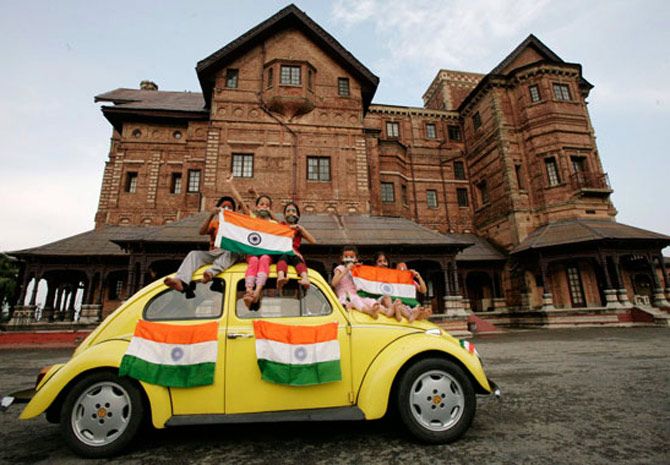'Let us see the tricolour flutter and soar as we park our vehicles, as we play cricket in the gullies, as we surf the Internet, as we enter our places of worship,' says Ankita Athawale.

It was preceded by uproarious cacophony in the media. At a time when Sakshi Malik had resurrected our hopes of Olympic glory, P V Sindhu shot to national awareness, with no less than a place in the badminton final.
You, like me, social media netizen and custodian of the age of information, kept the online social space abuzz.
You tweeted, texted and posted in raucous delight through the match.
Sindhu won silver. And then, while you were being swept up on a wave of collective media jubilation, it happened.
Sindhu stood on the pedestal, a medal around her neck, her gaze set on the Indian flag rising before her.
You looked at the rising tricolour, your heart skipped a beat, leapt up and stung your eyes.
As if all fell silent.
It did not play anywhere in the stadium but Jana Gana Mana rung in your ears.
Did it? It did, for me.

Do you not think it unfortunate that we get to hear, much less sing our national anthem so rarely in our lifetimes?
We allow symbols of allegiance to our favourite brands, our favourite bands, our popular celebrities, our popular-or-not politicians, not to mention our God(s) to saturate our senses.
They have come to populate our mental landscape, to guide our emotions; I daresay they control our very lives.
Why then are symbols of our national identity so removed from our sensory consciousness?
Not on Independence Day, not when we win a cricket match, let us see the tricolour flutter and soar as we park our vehicles, as we play cricket in the gullies, as we surf the Internet, as we enter our places of worship.
Unlike a government welfare programme or electioneering drive, the national flag and national anthem are not in the precincts of political parties. Why not make our association with these symbols of national identity more habitual, less ceremonial?
Every week? Once a month? Every day?
You decide for your community, your workplace.
I decide for mine. Let it remind me, that the world may be shrinking, but I exist in a specific place, belong to a local, physical (not merely global or virtual) community and that I shoulder a responsibility to my immediate surroundings. Let it bind me to the person in the neighbouring house or seat or cubicle.

Where do the sloganeering youngsters on motorbikes disappear after Independence Day?
What happens to the fans with painted faces after the match is done?
Many generations of Indians now do not know what it was like to live in a nation suffused with national sentiment.
I dream that nation building will become 'cool' again, to be discussed at dinner parties, at tea stalls, at the bar, in offices, in local trains, on metros and on social media.
The nation building that challenges our acceptance of mediocrity as if it were a matter of life and death; because if we do not pay heed, it may soon be.
Can we keep the flame of national sentiment burning as we go about the all-consuming business of our daily lives?
Sindhu and Gopichand's example is heartening because it reminds us that we need only do our own jobs with a spirit of excellence and we would have done the nation proud.
If Nike's 'Just Do It' or Apple's 'Think Different' can inspire us to action, why not make a habit of singing Jana Gana Mana Adhinayak Jaya Hey... out aloud?
Rekindle a spark and ignite a fire.

I can count on my fingers the number of times I have heard the national anthem in the last 16 years since I left school. I recall with wonder the heady years of my early youth, when the sight of the national flag made my heart soar with a sense of ownership, with a sense of possibility.
Saala kuchh to kar jayenge, I used to think and it made my nerves tingle with excitement.
Sindhu, thank you for reminding me, that I have not been so hardened after all.
The vain confidence of the 16 year old may have waned and I may have been distracted by my globalised world view, but there is something within me that seeks to be redeemed.
Saala kuchh to karna hai.
Ankita Athawale is a writer and a student of Indian classical music, based in New Delhi and Bhopal.










